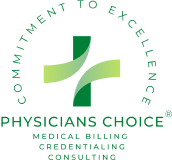How to Improve Revenue Cycle Management
Call Us at 727-300-0063
A successful medical practice is dependent on revenue cycle management. It directly impacts the bottom line of the provider. Revenue cycle management (RCM) directly impacts the patient’s experience.
Providers should understand the revenue cycle and seek ways to improve it.
How can an organization improve its revenue cycle management?
There are many ways that a provider, with the changes in technology and patients’ preferences, can improve their RCM Strategy. This will help them to improve both their financial health as well as their quality of patient care. Let’s get started.
Why Is Revenue Cycle Management Important?
Revenue cycle management aims to increase revenue for providers. RCM is a valuable strategy that healthcare providers can use, as it allows them the opportunity to continue to see more patients. Revenue cycle management is not only beneficial to providers. Increased revenue allows providers to invest more time and money into patient care.
RCM increases revenue and decreases insurance claim denials. Ensure that patient information, including coding, is correct on all submitted claims. Providers don’t need to invest resources in investigating and appealing denials when claims are not denied. Administrative staff can devote more time to patients.
Several crucial steps make up the revenue cycle, ensuring prompt reimbursement for providers. Due to their accuracy, tasks such as account creation, preregistration, verification of insurance eligibility, and medical coding require more time.
Complete these tasks quickly to receive reimbursement. Providers must make the necessary adjustments and improvements. Automated workflow systems are a useful advancement.
Workflow Automation
Revenue cycle management is made easier with the use of workflow automation systems. They can be used for:
- Prioritize front-end tasks to expedite the claims process
- Create non-patient files and migrate patient files as necessary
- Verify and correct patient data proactively
- Add coded comments automatically
- Confirm the patient’s insurance details before their visit
- Before an appointment, update outdated or missing policies
Workflow automation is one of the most important improvements that providers can make to RCM. Why?
As front-end tasks are highly accurate, errors in the early stages of RCM can be easily made, leading to a claim denial. The most common errors include inaccurate or missing information about patients and incorrect coding. Around 90% of denials can be prevented.
Workflow automation systems reduce the risk of denials by ensuring that patient and claim data is accurate. The provider benefits in two ways.
- Increased revenue – Providers are not reimbursed when claims are denied. Providers who perform services prior to submitting a claim end up losing money if the claim is denied.
Even if the provider appeals the denial and resubmits the claim and gets approved, they have already lost revenue. Effective prevention of claim rejections can lead to an additional revenue of more than $5,000,000 3 for the average hospital.
- More time – It takes more time to investigate and appeal a denial of a claim. Administrative staff are pulled away from their normal duties. Administrative staff can devote more time to patient care by preventing claim denials before they happen.
Automating front-end tasks, such as submitting claims and completing forms, is more cost-effective compared to manually performing them.
The cost of manually checking eligibility and prior authorizations, for example, is $7.50 on average per transaction. The automated systems will pay for themselves.
Investing in Staff
A healthcare facility should not only invest in technology. Investing in administrative staff is just as important. Assign many front-end duties to administrative staff and delegate back-end responsibilities, like revenue collection, to other departments.
Utilize employee education programs to train staff in all aspects of RCM. This will help them understand the entire revenue cycle and not just their part. It is easier for the administrative staff to see how they can collaborate to make the transition between front-end and back-end tasks seamless.
Call Us at 727-300-0063
Understanding Patient Preferences
The patients are the most crucial factor when it comes to running a medical office. Providers can’t increase their revenue if there are no patients.
It is not just about providing treatment that makes a patient receive quality care. A satisfactory patient experience is about making patients feel heard, acknowledged, and guided during a stressful time. Healthcare and insurance can seem intimidating to many patients. The providers should strive to make patients’ experiences as stress-free and enjoyable as possible.
Streamlining patient tasks is one of the best ways to improve patient satisfaction. Automated workflows make it easier for the patient to:
- Schedule appointments
- Remind yourself of appointments and payments via email and text
- Online bill payment
- Automatic payments
- Online portals provide access to clinical and financial information
Patients prefer these automated systems. These systems are not only easy to use but also allow patients to be more involved in their healthcare. Automated systems mean that there is no need for confusing and time-consuming communication between administrative staff and patients.
A healthcare practice that provides a better patient experience can ensure that patients will return to the practice when they next need medical attention. This means greater profitability for the healthcare provider.
Serving the patient is serving everyone.
Paying Upfront
In addition to accommodating patient preferences, setting up an automated workflow ensures that payments are made on schedule. Late and unpaid financial obligations slow the collection of healthcare revenue. Providers can provide financial estimates to patients in advance with an automated workflow system. This will help them understand their financial responsibilities.
One improvement providers can make to RCM is to require that patients pay upfront. Automated systems can offer pre-payment or point-of-service options, allowing patients to pay before receiving services. These systems allow credit card on file services to boost payment collection.
These practices ensure that providers receive prompt payment for their services and avoid late or lost payments.
Tracking Performance
Data-driven revenue cycles use certain metrics to better help providers understand their financial health. Tracking their financial performance allows providers to get a better picture of their healthcare organization and the areas where they can improve.
Some of the key indicators that you should be tracking include:
- Net days of receivables
- Claim denial rate
- Percentage of Collections
- Cost of collecting
Outsourcing RCM
Outsourcing RCM to a third-party company can improve the RCM of providers. Hiring a company with experience and knowledge to manage the revenue cycle allows providers to ensure its success without spending excessive time on it.
In addition, because they don’t have to manage the revenue cycle, providers can devote more time to providing quality patient care. A rise in accurate and timely provider reimbursements while increasing patient focus is a positive for all parties.
Improved RCM for Providers and Patients
The healthcare industry changes constantly to meet the demands of technology and patient preferences. New advancements continually benefit both the patient and the healthcare provider. It is for this reason that healthcare providers should never stop asking about ways to improve the revenue cycle.
Contact Physicians Choice® Medical Billing for more information.



